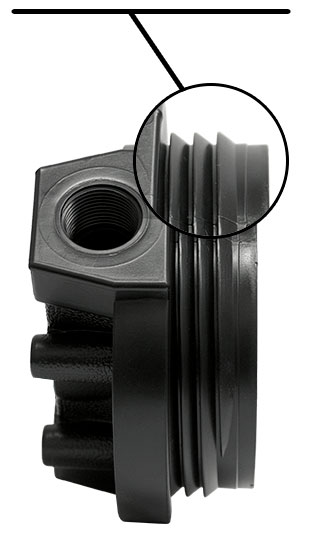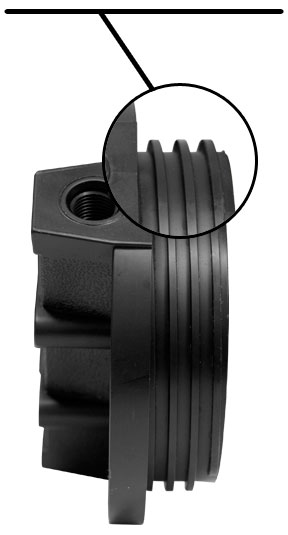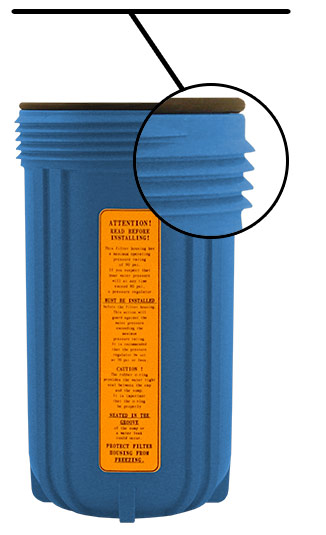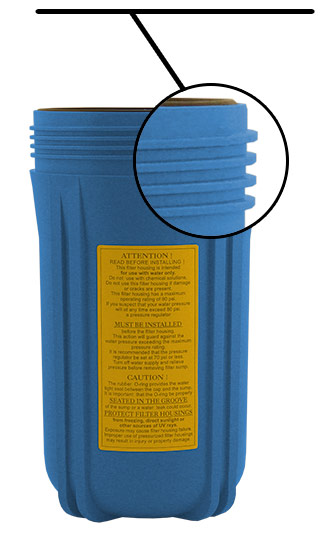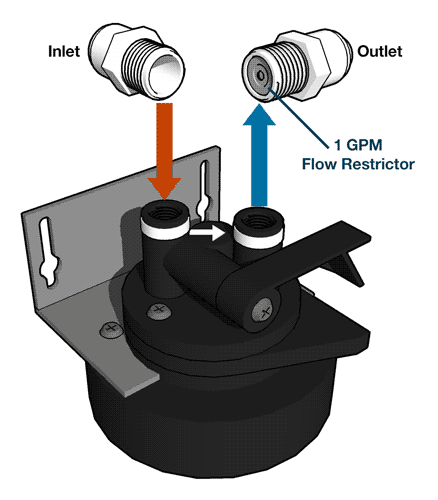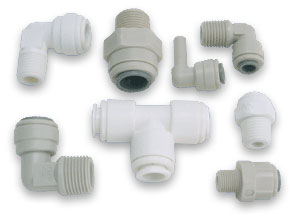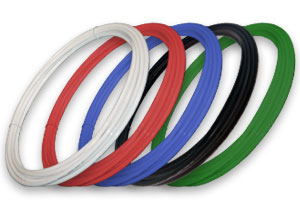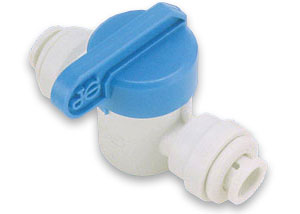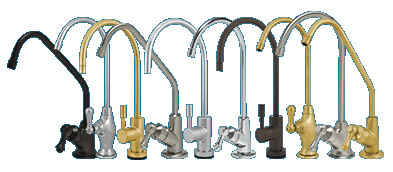Water Information
What is the NSF?
NSF International, The Public Health and Safety Company, a not-for-profit, non-governmental organization, is the world leader in standards development, product certification, education, and risk-management for public health and safety. For more than 59 years, NSF has been committed to public health, safety, and protection of the environment. While focusing on food, water, indoor air, and the environment, NSF develops national standards, provides learning opportunities through its Center for Public Health Education, and provides third-party conformity assessment services while representing the interests of all stakeholders. The primary stakeholder groups include industry, the regulatory community, and the public at large.
NSF is widely recognized for its scientific and technical expertise in the health and environmental sciences. Its professional staff includes engineers, chemists, toxicologists, and environmental health professionals with broad experience both in public and private organizations.
NSF has earned the Collaborating Center designations by the World Health Organization (WHO) for Food and Water Safety and Indoor Environment.
Serving manufacturers operating in 81 countries, NSF was founded in 1944 and is headquartered in Ann Arbor, MI USA. The NSF mark is recognized for its value in international trade around the world and is respected by regulatory agencies at the local, state, and federal levels.
Drinking Water Treatment Chemicals
(NSF/ANSI Std. 60)
The NSF Water Distribution Systems Program is responsible for the Certification of drinking water treatment chemicals and drinking water system components to ensure that these products do not contribute contaminants to drinking water that could cause adverse health effects.
NSF/ANSI Standard 60: Drinking Water Treatment Chemicals – Health Effects is the nationally recognized health effects standard for chemicals which are used to treat drinking water.
Listing of NSF Standard 60 Certified Products
Municipal Drinking Water System Components
(NSF/ANSI Std. 61, AWWA)
The NSF Water Distribution Systems Program is responsible for the Certification of drinking water treatment chemicals and drinking water system components to ensure that these products do not contribute contaminants to drinking water that could cause adverse health effects.
NSF/ANSI Standard 61: Drinking Water System Components – Health Effects is the nationally recognized health effects standard for all devices, components and materials which contact drinking water.
Listing of NSF Standard 61 Certified Products
Drinking Water Treatment Units
(NSF/ANSI Std. 42, 44, 53, 55, 58, 62)
NSF has served the point-of-use, point-of-entry Drinking Water Treatment Unit (DWTU) industry since 1968. NSF was asked then by the state drinking water administrators, and later by the USEPA, to develop consensus standards and certify health and aesthetic contaminant reduction claims for DWTUs.
These Standards have become important to manufacturers around the world as they seek entrance into this growing market. In 1996, NSF became a World Health Organization Collaborating Center for Drinking Water Safety and Treatment, which positions NSF Standards and NSF Certified products to be embraced around the world.
Search Listing of NSF Certified Products
List of NSF Standards
NSF/ANSI Standard 42:
Drinking Water Treatment Units – Aesthetic Effects
This standard covers point-of-use (POU) and point-of-entry (POE) systems designed to reduce specific aesthetic or non-health-related contaminants (chlorine, taste and odor, and particulates) that may be present in public or private drinking water.
NSF/ANSI Standard 44:
Cation Exchange Water Softeners
This standard covers residential cation exchange water softeners designed to reduce hardness from public or private water supplies. Additionally, this standard can verify the system’s ability to reduce radium and barium.
NSF/ANSI Standard 53:
Drinking Water Treatment Units – Health Effects
Overview: Standard 53 addresses point-of-use (POU) and point-of-entry (POE) systems designed to reduce specific health-related contaminants, such as Cryptosporidium, Giardia, lead, volatile organic chemicals (VOCs), MTBE (methyl tertiary-butyl ether), that may be present in public or private drinking water.
NSF/ANSI Standard 55:
Ultraviolet Microbiological Water Treatment Systems
This standard establishes requirements for point-of-use (POU) and point-of-entry (POE) non-public water supply (non-PWS) ultraviolet systems and includes two optional classifications. Class A systems (40,000 uwsec/cm2) are designed to disinfect and/or remove microorganisms from contaminated water, including bacteria and viruses, to a safe level. Class B systems (16,000 uw-sec/cm2) are designed for supplemental bactericidal treatment of public drinking water or other drinking water, which has been deemed acceptable by a local health agency.
NSF/ANSI Standard 58:
Reverse Osmosis Drinking Water Treatment Systems
This standard was developed for point-of-use (POU) reverse osmosis (RO) treatment systems. These systems typically consist of a pre-filter, RO membrane, and post-filter. Standard 58 includes contaminant reduction claims commonly treated using RO, including fluoride, hexavalent and trivalent chromium, total dissolved solids, nitrates, etc. that may be present in public or private drinking water.
NSF/ANSI Standard 61:
Drinking Water System Components
Standard 61 covers specific materials or products that come into contact with drinking water, drinking water treatment chemicals or both.
NSF/ANSI Standard 62:
Drinking Water Distillation Systems
Standard 62 covers distillation systems designed to reduce specific contaminants, including total arsenic, chromium, mercury, nitrate/nitrite, and microorganisms from public and private water supplies.
NSF/ANSI Standard 372:
Drinking Water System Components – Lead Content
Standard 372 2 addresses lead content only. Typically, regulations also require conformance to an extraction or leaching test standard. For most products, this means NSF/ANSI 61. For point-of-use and point-of-entry water treatment products, this means NSF/ANSI 42, 44, 53, 55, 58 or 62.
NSF/ANSI Standard 401:
Emerging Contaminants/Incidental Compounds
Standard 401 verifies the ability of a water treatment device to reduce up to 15 of the emerging contaminants shown here. This list includes some prescription/OTC drugs, new types of herbicides and pesticides and chemicals used as flame retardants and detergents that have been found at trace levels in drinking water.
Text and images have been taken from the official NSF web site.

